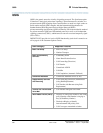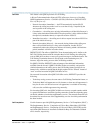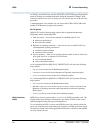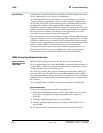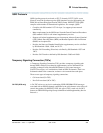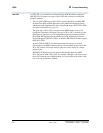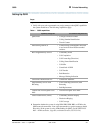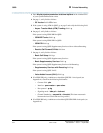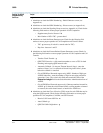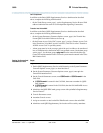
QSIG B Private Networking
Administration for Network Connectivity
CID: 77730 555-233-504 — Issue 1 — April 2000
368
QSIG Call Forwarding
(Diversion with
Rerouting)
This feature allows a forwarded call can be rerouted in a private network to find a
more cost-effective or resource-efficient path.
QSIG Transfer into Lucent QSIG Voice Mail
Transfer into QSIG
Voice Mail
This feature uses QSIG Call Transfer, along with a manufacturer-specific information
(MSI) message, to transfer a call directly into a subscriber’s mailbox when the voice
mail system is connected to the Message Center PBX via a QSIG link.
The voice mail system must be a Lucent system that supports the QSIG Transfer Into
QSIG Voice Mail MSI operation.
Note: This feature currently works only with the Serenade voice mail
system. This feature does not work with QSIG Centralized AUDIX.
The entire route from the PBX activating Transfer Into Voice Mail to the voice mail
system must be QSIG.
QSIG Value-Added Lucent (VALU)
Value-Added Lucent (VALU) adds three forms of feature transparency to QSIG
networks.
• Called/Busy Number — The system sends and displays across the network the
called party’s number to the calling party during alerting. It updates the display to
“connected number” when the called party answers the call. It also sends and
displays a busy party’s number. This serves to confirm to the caller that he or she
dialed the correct number.
The Called/Busy Number feature is an extension to QSIG Called/Busy Name. For
additional information, see QSIG Name and Number Identification (page 361).
The Called/Busy Number never displays alone; it displays only if the Called/Busy
Name is available (for instance, received from the far end and marked
“presentation allowed”). In contrast, upon receipt of a Calling Number without a
Calling Name, the number displays with the words “CALL FROM.”
• Distinctive Ringing — QSIG VALU provides two kinds of distinctive ringing
across the network: internal and external.
• Call Coverage — The system allows calls to be covered by extensions across the
network. This coverage operates similarly to DCS Call Coverage (page 315),
though the connectivity of the network itself differs. If administered, path
replacement is invoked after coverage.
These features work with phone users as well as for a centralized attendant service.



